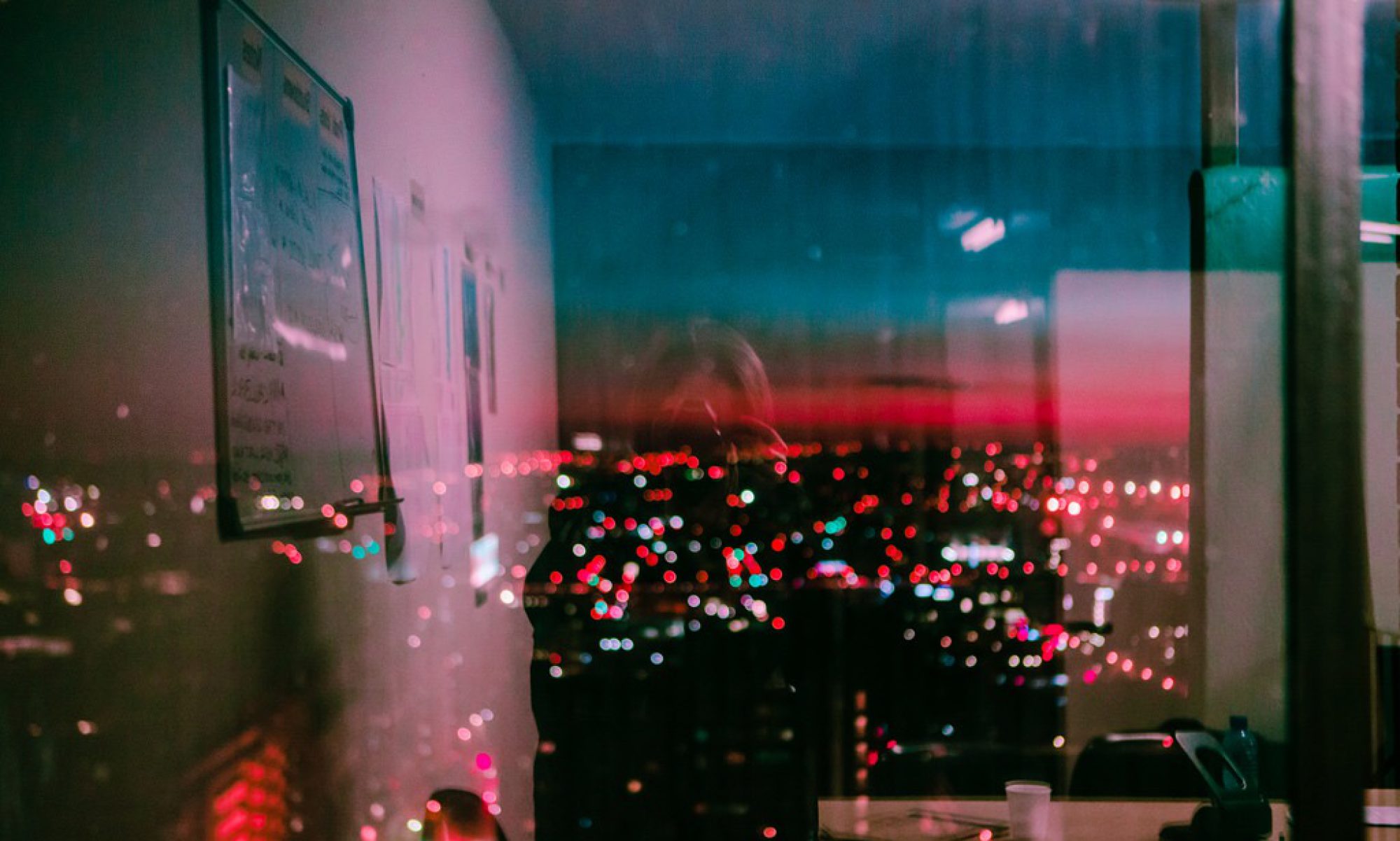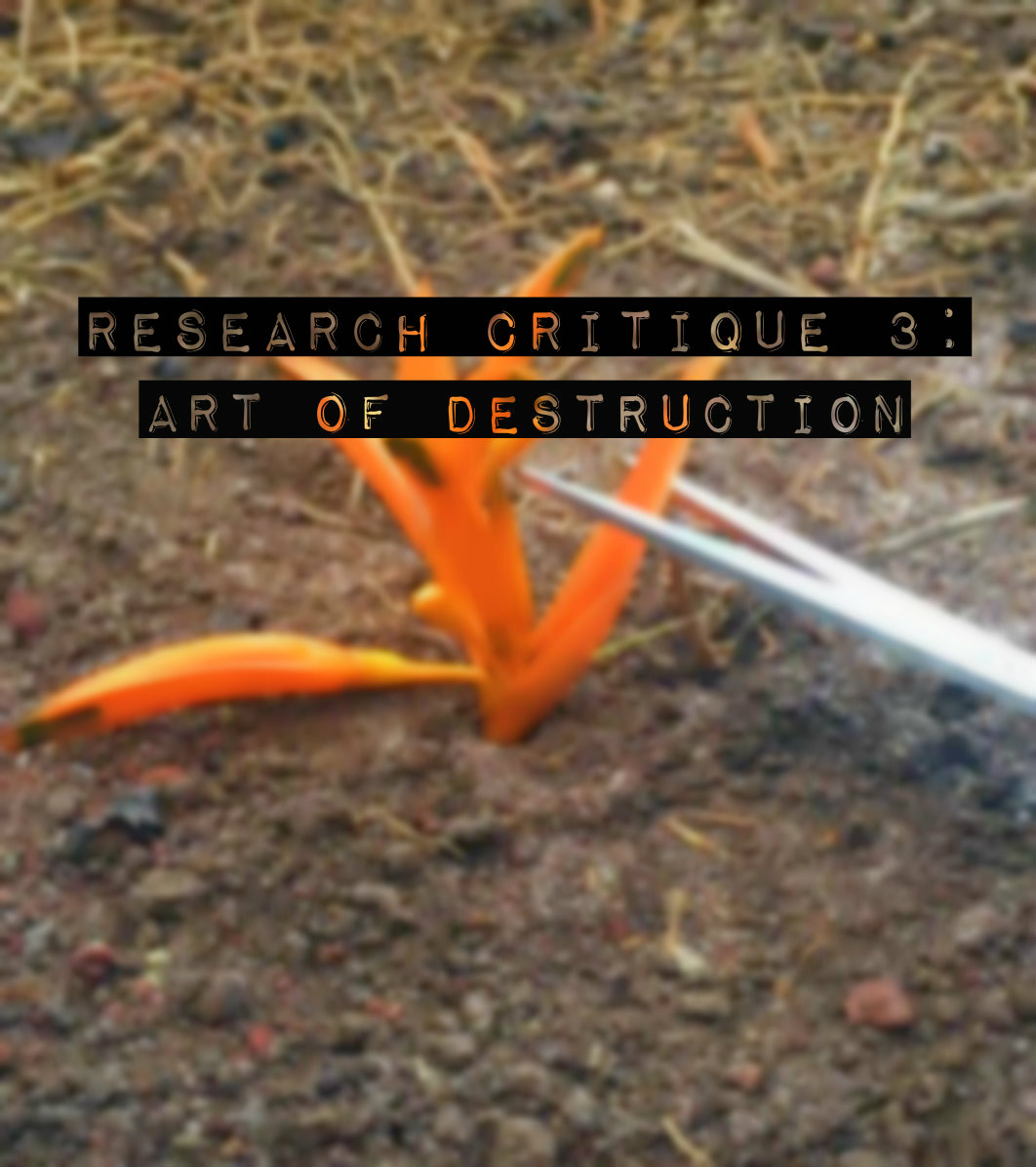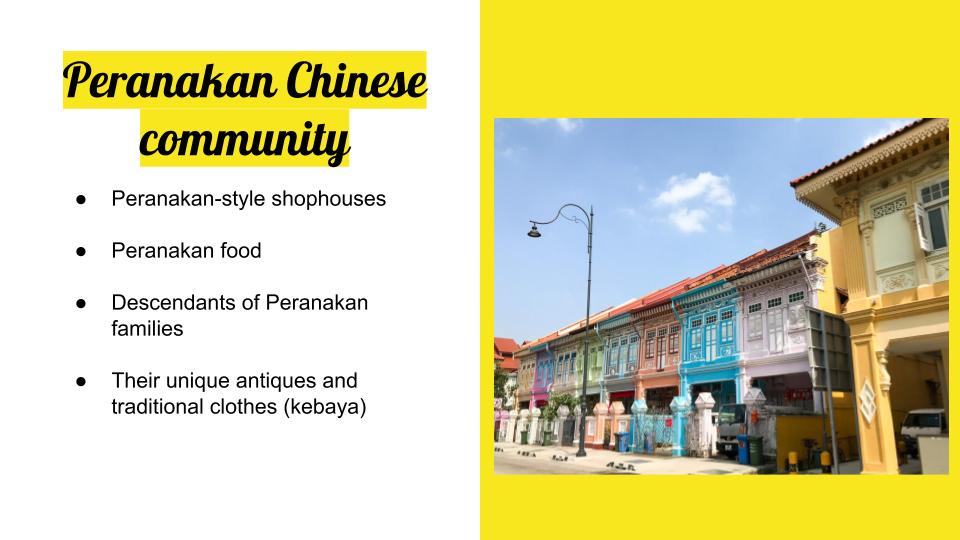In the ‘art of destruction’ project, we had to incorporate bits of elements from glitch art and the idea of destruction – both as an act to portray the artistic expression.
Our group (Fizah, Naomi, Azizah and me), did a stop-motion video of a living flower “decaying” by having us each destroying it. We took pictures of the whole process and compile them in a video. First, we plucked the flower out from the other plants. Then we cut the flower petals, tried to burn it, stabbed it with a penknife and stepping on it. We further emphasised the idea of ‘deteriorating one’s life’ by coming up with a poem with words of aggravation towards the flower, (what you heard in the video) to go alongside the process of it.
The fact that it is a living thing, it just emphasises on the “decaying” and deteriorating in it’s original quality which here is, the quality of it’s life (that itself is an art form of nature). And that destruction process in the video, is a new quality of an artwork. Similarly for the ending, where the quality of it is it’s death.
But during the process of destroying it, the problem we faced was to actually make it look like it decayed. Due to the fact that the destruction process seemed forced as we gave ourselves instructions on what to do to it, some parts was a failure because
1) we couldn’t get the flower to burn no matter how many times we tried due to the wind blowing the other direction
2) stabbing it with a penknife was quite stupid considering there’s not really much effect seen from that act of destruction.
Yet we still put in whatever pictures we had into the video, which was what made the artwork inconsistent – we had different process pictures of destruction that did not add up with the nice flow of our poem spoken. Also, we did not have the time to clear out the background noises when we were citing the poem. However, instead of editing the background noises out, we let it be the way it was. Even with the inconsistency of the other things, we embraced it and let it be part of our artwork.
The mess in the process is like a glitch, parallel to the process of the destruction of the flower. Everything in this is what I call an ‘Art of Destruction’. Both literally (what we did to the flower) and not literally (the mess in the process).
In Randall Packer’s interview with Chip Lord, by “examining the impact of mass media in American culture” Ant Farm stages an explosive collision of two of America’s most potent cultural symbols: the automobile and television. This artwork (performance) called Media Burn embraces the idea of destruction as well to portray their criticism towards the American’s obsession with media.
In Randall Packer’s conversation with Jon Gates “Hyperallergic”, Gates said that “But from a dirty new media perspective, what you might want to be doing is “rebugging,”…..instead of debugging and refining those errors and glitches and noise…. “and pushing different aspects of the machine worlds to see their thresholds, and experiment, and play”. This is what we are trying to do: we experiment and now it is time to leave that ‘noise’ in our work be, instead of taking it out like we usually do in our process towards a ‘good artwork’ and instead allow it to be part of our artwork itself – an art of destruction.




















































